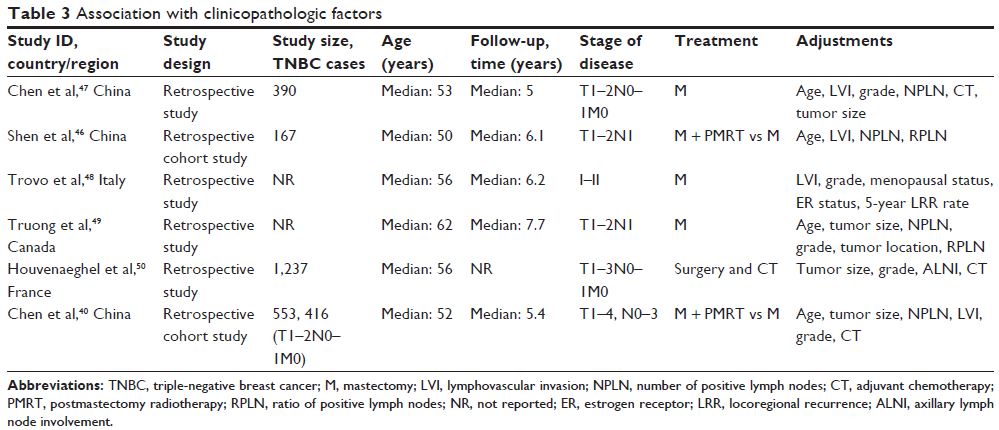9 7 3 1 6
论文已发表
注册即可获取德孚的最新动态
IF 收录期刊
- 3.3 Breast Cancer (Dove Med Press)
- 3.4 Clin Epidemiol
- 2.5 Cancer Manag Res
- 2.9 Infect Drug Resist
- 3.5 Clin Interv Aging
- 4.7 Drug Des Dev Ther
- 2.7 Int J Chronic Obstr
- 6.6 Int J Nanomed
- 2.5 Int J Women's Health
- 2.5 Neuropsych Dis Treat
- 2.7 OncoTargets Ther
- 2.0 Patient Prefer Adher
- 2.3 Ther Clin Risk Manag
- 2.5 J Pain Res
- 2.8 Diabet Metab Synd Ob
- 2.8 Psychol Res Behav Ma
- 3.0 Nat Sci Sleep
- 1.8 Pharmgenomics Pers Med
- 2.7 Risk Manag Healthc Policy
- 4.2 J Inflamm Res
- 2.1 Int J Gen Med
- 4.2 J Hepatocell Carcinoma
- 3.7 J Asthma Allergy
- 1.9 Clin Cosmet Investig Dermatol
- 2.7 J Multidiscip Healthc

T1-2N0-1M0 早期三阴性乳腺癌乳房切除术后放疗的作用: 一个系统回顾
Authors Chen F, Pu F
Received 4 October 2016
Accepted for publication 11 January 2017
Published 6 April 2017 Volume 2017:10 Pages 2009—2016
DOI https://doi.org/10.2147/OTT.S123803
Checked for plagiarism Yes
Review by Single-blind
Peer reviewers approved by Dr Amy Norman
Peer reviewer comments 2
Editor who approved publication: Dr William Cho
Abstract: Triple-negative breast cancer (TNBC), which represents 15%–20% of all
breast cancers, is defined by the absence of estrogen receptor (ER) and
progesterone receptor (PR) and overexpression of human epidermal growth factor
receptor 2 (HER2). Owing to the absence of specific therapeutic targets and its
aggressive biologic characteristics, TNBC patients often experience a high risk
of disease progression and poor overall survival. Furthermore, TNBC exhibits an
early pattern of recurrence with a peak recurrence risk at 2–3 years after
surgery. Currently, chemotherapy continues to be the mainstay in TNBC patients;
however, such treatment leaves them associated with a high rate of local and
systemic relapses even in early-stage (T1–2N0–1M0). Therefore, in early-stage
disease, greater emphasis is placed on locoregional treatments, based on
radiation therapy (RT) after surgery, to reduce local and systemic relapses.
However, there are no specific treatment guidelines for early-stage
(T1–2N0–1M0) TNBC patients. In this review, we discuss the type of surgery
received and the relevant adverse clinicopathologic factors and underlying
BRCA1 mutation status regarding the influence of tailing postmastectomy
radiotherapy (PMRT). In addition, we assess the role of PMRT in early-stage
(T1–2N0–1M0) TNBC patients.
Keywords: triple-negative breast cancer,
postmastectomy radiotherapy, early stage, review
